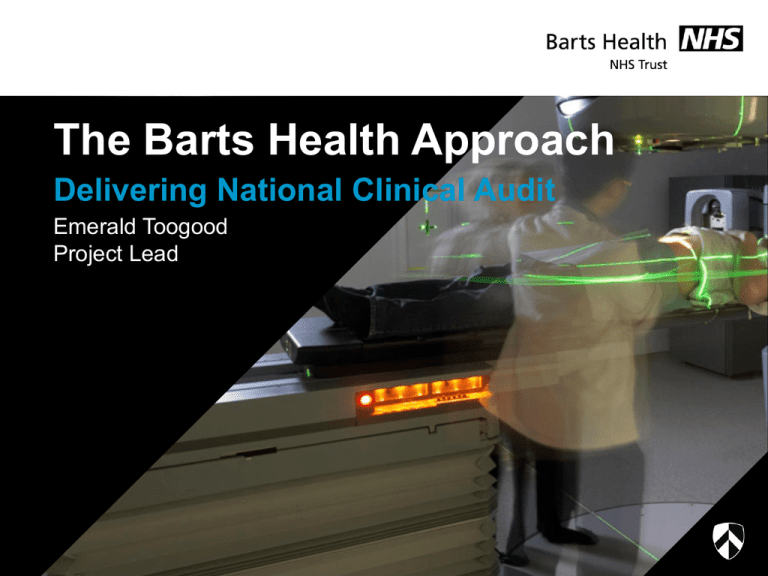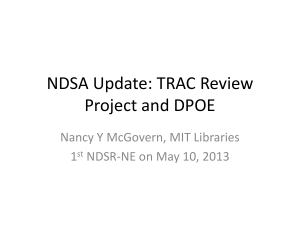
The Barts Health Approach
Delivering National Clinical Audit
Emerald Toogood
Project Lead
Content
• People and practice
• Our approach to learning from clinical audit
• Our approach to obtaining data for clinical audit
• Our approach to outlier investigations
• Sharing clinical audit with stakeholders
Context
• Over 15,000 staff
• More than six sites
• Our vision and values:
• Relentlessly improving and innovating for patient safety
• Achieving ambitious results by working together
• Valuing every member of staff and their contribution to the
care of our patients
People
• Central Clinical Effectiveness Unit sits within the Business
Intelligence Unit
• Clinical Effectiveness Leads in each specialty plan the specialty
audit programme
• Lead Clinician
• Junior Doctor
• Administrator (eg MDT Coordinator)
Specialty programme
• Local projects,
informed by
national audit
project
results/design
• Presentation date
• Caveat: areas
with high volume
of national audit
activity (eg BTS)
are local priorities
being
addressed?
Committee review – the content
First committee meeting
within one month of the report
publication
Second committee meeting
when all actions have been
achieved
Policy
Participation in national clinical audit is a Barts Health priority agreed
by the Trust Board
‘National clinical audit and management of outliers’ policy in addition
to local audit policy, incorporates
•
•
•
•
•
•
•
Roles and responsibilities (eg registration, both with the supplier and internally)
Information governance
Data quality
Personal development
Service improvement principles
Outlier management
Sharing good and bad news
Data sources
Access to paper records
Identifying patients for clinical audit
Using CRS-derived data
- improving data quality and completeness
- getting the diagnoses and problems right for each patient.
Collaboration platform
Outlier investigation
• Who undertakes the investigation
• Checking data, including date of death, age, sex, disease severity,
co-morbidity
• Global trigger tool
• Use of routinely available data, risk management systems, clinical
due diligence
Key points
• Bring the right people together to better understand their service
• Make sure that the team knows what to do and when
• Simultaneously improve data quality and completeness
• Use local audit to complement the national audit programme, not
forgetting local priorities
• Use national audit data in conjunction with routinely available data
– a key element of letters of representation and due diligence









